Balkinization
an unanticipated consequence of
Jack M. Balkin
Balkinization Symposiums: A Continuing List
E-mail:
Jack Balkin:
jackbalkin at yahoo.com
Bruce Ackerman
bruce.ackerman at yale.edu
Ian Ayres
ian.ayres at yale.edu
Corey Brettschneider
corey_brettschneider at brown.edu
Mary Dudziak
mary.l.dudziak at emory.edu
Joey Fishkin
joey.fishkin at gmail.com
Heather Gerken heather.gerken at yale.edu
Abbe Gluck abbe.gluck at yale.edu
Mark Graber
mgraber at law.umaryland.edu
Stephen Griffin
sgriffin at tulane.edu
Jonathan Hafetz
jonathan.hafetz at shu.edu
Jeremy Kessler
jkessler at law.columbia.edu
Andrew Koppelman
akoppelman at law.northwestern.edu
Marty Lederman
msl46 at law.georgetown.edu
Sanford Levinson
slevinson at law.utexas.edu
David Luban
david.luban at gmail.com
Gerard Magliocca
gmaglioc at iupui.edu
Jason Mazzone
mazzonej at illinois.edu
Linda McClain
lmcclain at bu.edu
John Mikhail
mikhail at law.georgetown.edu
Frank Pasquale
pasquale.frank at gmail.com
Nate Persily
npersily at gmail.com
Michael Stokes Paulsen
michaelstokespaulsen at gmail.com
Deborah Pearlstein
dpearlst at yu.edu
Rick Pildes
rick.pildes at nyu.edu
David Pozen
dpozen at law.columbia.edu
Richard Primus
raprimus at umich.edu
K. Sabeel Rahmansabeel.rahman at brooklaw.edu
Alice Ristroph
alice.ristroph at shu.edu
Neil Siegel
siegel at law.duke.edu
David Super
david.super at law.georgetown.edu
Brian Tamanaha
btamanaha at wulaw.wustl.edu
Nelson Tebbe
nelson.tebbe at brooklaw.edu
Mark Tushnet
mtushnet at law.harvard.edu
Adam Winkler
winkler at ucla.edu
Compendium of posts on Hobby Lobby and related cases
The Anti-Torture Memos: Balkinization Posts on Torture, Interrogation, Detention, War Powers, and OLC
The Anti-Torture Memos (arranged by topic)
Recent Posts
Privacy Loss and Harm in an Era of Inference
Just A Few Blogs
ACS Blog
Alas, a Blog
Althouse
Arts and Letters Daily
Atrios (Eschaton)
Bill of Health
Buzzflash.com
Buzz Machine
Cato at Liberty
Juan Cole (Informed Comment)
Concurring Opinions
The Constitution in 2020
Corrente
Crooked Timber
Daily Howler
Daily Kos
Dana Boyd
Brad DeLong
Digby (Hullabaloo)
Discriminations
Daniel Drezner
Kevin Drum (Mother Jones)
Electrolite
En Banc
Eunomia (Daniel Larison)
Fafblog
Michael Froomkin (Discourse.net)
GovLab (Beth Noveck)
Rick Hasen (Election Law)
History News Network
How Appealing
Ignatz (Sam Heldman)
The Importance of (Ernie Miller)
Infolaw
Instapundit
International Economic Law and Policy Blog
IntLawGrrls
Jacob Levy
Jesus' General
Jurisdynamics
The Kitchen Cabinet
Mark Kleiman
Law Blog Central
Larry Lessig
Lawyers, Guns and Money
Liberal Oasis
Brian Leiter's Law School Reports
The Leiter Reports
Marginal Revolution
Megan McArdle
Memeorandum
Metafilter
Mirror of Justice
The New Republic
Newseum
No More Mister Nice Blog
Brendan Nyhan
Opinio Juris
Orcinus
The Originalism Blog
Pandagon
Passport (Foreign Policy)
Overcoming Bias
Political Animal (Washington Monthly)
Political Theory Daily Review
Political Wire (Taegan Goddard)
The Poor Man
Virginia Postrel
Prawfsblawg
Public Reason
Jonathan Rauch
Raw Story
Redstate
ReligiousLeftLaw.com
Reporters Committee For Freedom of the Press
Reproductive Rights Blog
Rothman's Roadmap to the Right of Publicity
SCOTUS Blog
Seeing the Forest
Clay Shirky
The Shifted Librarian
The Situationist
Larry Solum (Legal Theory)
Andrew Sullivan
Talking Points Memo
Talk Left
Tapped
Tbogg
TechPresident
The Paper Chase (Jurist)
Tom Paine
Tom Tomorrow (This Modern World)
Eve Tushnet
Uggabugga
University of Chicago Law School Faculty Blog
Unqualified Offerings
The Volokh Conspiracy
War and Piece (Laura Rozen)
Wampum
Oliver Willis
Wonkette
Written Description
Matthew Yglesias
Yin
Your Choice of Feeds
1. XML
powered by
2. Atom Feed
3. RSS 2.0
Privacy Loss and Harm in an Era of Inference
Guest Blogger
In his timely
and incisive book, The Privacy Fallacy, Ignacio Cofone critiques the
foundational assumptions of privacy regulation. He convincingly demonstrates
that privacy law’s persistent emphasis on individual control and procedural
compliance fails to grasp the true nature of privacy harm and overlooks the
systemic realities of our modern information economy.
Privacy scholars
have long recognized that the dominant legal approaches to data privacy are
fundamentally misaligned with the realities of our modern information economy. These
models are grounded in notice, choice, and individual control. They assume
consent remains meaningful, even as data-intensive technology has become
increasingly complex and ubiquitous in daily life. Cofone illuminates how
current laws reduce privacy protection to a series of individual choices that people
cannot meaningfully make. These systems expect individuals to foresee
and prevent privacy violations through consent mechanisms and individual
rights, while simultaneously accepting that even courts struggle to identify
privacy harms after they occur. As Cofone aptly notes, “If judges have a
difficult time seeing privacy harm after it happens, how can one expect people
to see it before it happens?”
He illustrates
this problem through cases like TransUnion
v. Ramirez, where TransUnion erroneously labeled thousands
of people as potential terrorists in their credit reports. Despite the obvious
reputational risks and emotional distress of being falsely designated as a
terrorist, the Supreme Court dismissed the claims of most class members because
they couldn’t prove their credit reports had been seen by third parties. This
case highlights Cofone’s broader critique of privacy law’s failure to account
for harms that do not result in direct, material consequences but nonetheless
undermine individual dignity and trust.
Cofone’s
conceptualization of privacy loss is valuable. He characterizes it as
probabilistic and incremental, rather than discrete moments where information moves
from “private” to “public.” When Google, for example, enhances its knowledge
about someone’s willingness to pay for flights, a privacy loss has occurred
through this improved statistical certainty - even if the person does not know
about it and no concrete consequences materialize.
This approach captures
how seemingly innocuous data collection enables sensitive inferences through
correlation and aggregation. In complex data ecosystems, patterns in browsing
history, app usage, or purchase data might reveal health conditions, sexual
orientation, or political beliefs that were never explicitly disclosed.
Traditional frameworks, focused on discrete information disclosure, overlook
these modern mechanisms of gaining probabilistic knowledge about individuals
indirectly.
After
establishing this descriptive account of privacy loss, Cofone turns to the
normative question of when such losses should trigger legal remedies. He
defines privacy harms as “the wrong of producing unjustified privacy losses for
others for private gain, violating privacy’s socially recognized value.” Like
battery—which compensates individuals for physical injury while recognizing
that the harm flows from violations of autonomy—privacy harms are distinct from
their tangible consequences.
This separation of descriptive loss from
normative harm addresses a fundamental limitation in privacy law: its reliance
on concrete, consequential damages to recognize harm. His framework provides
courts with a means to address privacy violations that operate invisibly,
through mechanisms like inference
and aggregation, which often escape traditional scrutiny. By
emphasizing privacy as relational and collective
rather than purely individualistic, Cofone shifts the focus to systemic harms
embedded in modern data ecosystems.
To evaluate
when privacy loss rises to the level of privacy harm, he examines three key
contextual factors: the entities involved, the type of information at issue,
and how it was collected, processed, or shared. For Cofone, privacy harms occur
when data practices undermine key social values that privacy protects,
including maintaining autonomy, fostering trust, enabling intimacy, and
preserving democratic self-governance. He characterizes contemporary privacy
harm as “informational exploitation” where entities with asymmetric power
profit from personal information while disregarding individual wellbeing. He
illustrates this through Grindr’s sharing of users’ sexual orientation and HIV
status with third parties. The privacy harm arose from the platform’s
exploitation of its position to profit from information in ways that violated
both individual autonomy over sensitive personal information and the collective
value of safe spaces for marginalized communities.
Anticipating critique that his notion of privacy
harm is too vague, Cofone notes that courts rely on ill-defined social norms to
assess whether someone’s behavior is “reasonable” or their actions “highly
offensive.” While determinations of reasonableness are fact- and
context-dependent in traditional cases, Cofone's framework poses a more
fundamental challenge. He is not simply asking for courts to apply law to
specific facts, but to make normative choices about legitimate and highly
contested values. Privacy values can and do conflict.
Cofone’ framework requires more detail about how
to resolve scenarios when privacy values conflict. His examples about
for-profit companies using predictive analytics to increase online engagement
or unnecessary spending are straightforward. But what about instances that are
not as clear? Schools, for example, often monitor students' reading habits,
communications, and digital activities to detect and prevent self-harm or
violence, thereby advancing the important social value of harm prevention. At
the same time, such practices conflict with other critical values, such as
protecting students from surveillance that could chill their intellectual exploration
and self-expression. In those instances which privacy value should
prevail?"
Cofone’s
conception of exploitation as the unjustified use of personal information
raises important questions about its meaning and scope. The framework critiques
corporate profit-seeking but offers less clarity outside the consumer context. Future
work must address how exploitation applies to non-profits or public agencies
who might prioritize goals like education, public health, or safety but still
undermine privacy by disregarding individual autonomy or collective social
values. Refining the definition and scope of exploitation is crucial to
understanding how privacy harms arise in these broader and more complex
scenarios.
Building on his distinctions between privacy and
consequential harms, Cofone develops a hybrid enforcement model that leverages
complementary institutional capacities. Regulatory agencies would address
systemic practices through forward-looking oversight, setting standards for
data minimization and privacy-by-design. This public oversight would be
complemented by a dual liability scheme focused on outcomes rather than
procedural violations.
For consequential harms—like financial loss,
reputational damage, or discrimination—Cofone advocates strict liability,
drawing parallels to environmental law and products liability. In both
contexts, corporate actors control both the likelihood and magnitude of harm
through their practices, while individuals have little meaningful ability to
avoid or mitigate risks. For intrinsic privacy harms—the wrongful exploitation
of personal information itself—he proposes a liability regime that would
recognize these violations even absent concrete injury, while suggesting
mechanisms like statutory damages caps to make the system workable.
Yet this framework’s reliance on outcome-based
liability encounters significant challenges when addressing modern data
ecosystems. Cofone’s theory captures how privacy violations unfold through
probabilistic knowledge, but his liability scheme relies on identifying harms
after they occur. For example, algorithmic tools curate and filter the choices
individuals encounter, influencing which jobs, loans, or educational pathways
they are likely to see and pursue. In doing so, they entrench systemic inequalities
and create algorithmically
disfavored castes—groups excluded from critical opportunities
through the hidden, cumulative effects of automated curation. Neither the privacy loss nor the consequential harm is readily
apparent, making it difficult to identify and address them after the fact. This
suggests that meaningful redress may require stronger ex ante measures to
prevent these harms from arising in the first place.
Yet rather than
undermining Cofone’s analysis, these implementation difficulties highlight the
importance of his theoretical moves toward outcome-based standards and systemic
regulation. His treatment of privacy loss through probabilistic knowledge, combined
with attention to power dynamics and exploitation, provides essential
foundations for addressing how modern systems affect privacy through invisible
mechanisms of inference and exclusion.
The Privacy
Fallacy succeeds in its primary aim: demonstrating why
current privacy frameworks fail to address modern privacy challenges and
offering theoretical tools for building better alternatives. The book’s careful
parsing of privacy loss and privacy harm provides conceptual clarity that
future scholars and courts will find invaluable. The deeper contribution lies
in how Cofone’s framework reveals privacy’s fundamentally social nature. By
moving beyond individualistic models of privacy harm, the book opens new
possibilities for understanding privacy as a collective good that requires
collective solutions.
Elana Zeide is Assistant Professor of Law at the
University of Nebraska. You can reach her by e-mail at zeide@unl.edu.
Posted
9:00 AM
by Guest Blogger [link]
Books by Balkinization Bloggers

Linda C. McClain and Aziza Ahmed, The Routledge Companion to Gender and COVID-19 (Routledge, 2024)

David Pozen, The Constitution of the War on Drugs (Oxford University Press, 2024)

Jack M. Balkin, Memory and Authority: The Uses of History in Constitutional Interpretation (Yale University Press, 2024)
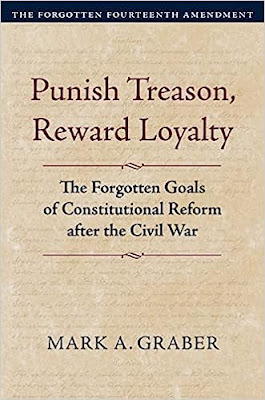
Mark A. Graber, Punish Treason, Reward Loyalty: The Forgotten Goals of Constitutional Reform after the Civil War (University of Kansas Press, 2023)
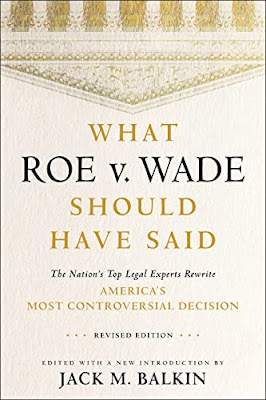
Jack M. Balkin, What Roe v. Wade Should Have Said: The Nation's Top Legal Experts Rewrite America's Most Controversial Decision - Revised Edition (NYU Press, 2023)

Andrew Koppelman, Burning Down the House: How Libertarian Philosophy Was Corrupted by Delusion and Greed (St. Martin’s Press, 2022)

Gerard N. Magliocca, Washington's Heir: The Life of Justice Bushrod Washington (Oxford University Press, 2022)
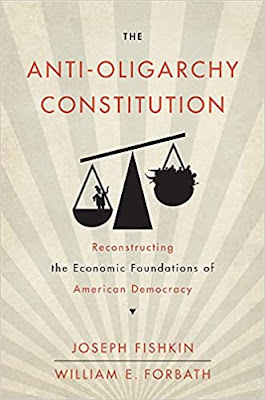
Joseph Fishkin and William E. Forbath, The Anti-Oligarchy Constitution: Reconstructing the Economic Foundations of American Democracy (Harvard University Press, 2022)

Mark Tushnet and Bojan Bugaric, Power to the People: Constitutionalism in the Age of Populism (Oxford University Press 2021).

Mark Philip Bradley and Mary L. Dudziak, eds., Making the Forever War: Marilyn B. Young on the Culture and Politics of American Militarism Culture and Politics in the Cold War and Beyond (University of Massachusetts Press, 2021).

Jack M. Balkin, What Obergefell v. Hodges Should Have Said: The Nation's Top Legal Experts Rewrite America's Same-Sex Marriage Decision (Yale University Press, 2020)

Frank Pasquale, New Laws of Robotics: Defending Human Expertise in the Age of AI (Belknap Press, 2020)

Jack M. Balkin, The Cycles of Constitutional Time (Oxford University Press, 2020)

Mark Tushnet, Taking Back the Constitution: Activist Judges and the Next Age of American Law (Yale University Press 2020).

Andrew Koppelman, Gay Rights vs. Religious Liberty?: The Unnecessary Conflict (Oxford University Press, 2020)

Ezekiel J Emanuel and Abbe R. Gluck, The Trillion Dollar Revolution: How the Affordable Care Act Transformed Politics, Law, and Health Care in America (PublicAffairs, 2020)

Linda C. McClain, Who's the Bigot?: Learning from Conflicts over Marriage and Civil Rights Law (Oxford University Press, 2020)
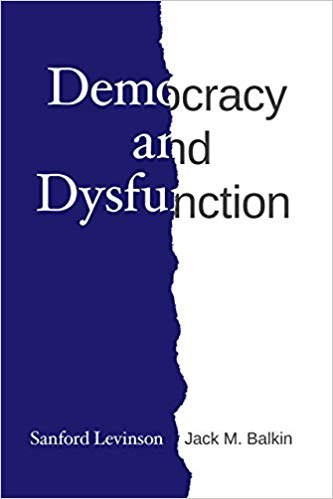
Sanford Levinson and Jack M. Balkin, Democracy and Dysfunction (University of Chicago Press, 2019)

Sanford Levinson, Written in Stone: Public Monuments in Changing Societies (Duke University Press 2018)

Mark A. Graber, Sanford Levinson, and Mark Tushnet, eds., Constitutional Democracy in Crisis? (Oxford University Press 2018)

Gerard Magliocca, The Heart of the Constitution: How the Bill of Rights became the Bill of Rights (Oxford University Press, 2018)

Cynthia Levinson and Sanford Levinson, Fault Lines in the Constitution: The Framers, Their Fights, and the Flaws that Affect Us Today (Peachtree Publishers, 2017)

Brian Z. Tamanaha, A Realistic Theory of Law (Cambridge University Press 2017)

Sanford Levinson, Nullification and Secession in Modern Constitutional Thought (University Press of Kansas 2016)

Sanford Levinson, An Argument Open to All: Reading The Federalist in the 21st Century (Yale University Press 2015)

Stephen M. Griffin, Broken Trust: Dysfunctional Government and Constitutional Reform (University Press of Kansas, 2015)

Frank Pasquale, The Black Box Society: The Secret Algorithms That Control Money and Information (Harvard University Press, 2015)

Bruce Ackerman, We the People, Volume 3: The Civil Rights Revolution (Harvard University Press, 2014)
Balkinization Symposium on We the People, Volume 3: The Civil Rights Revolution

Joseph Fishkin, Bottlenecks: A New Theory of Equal Opportunity (Oxford University Press, 2014)

Mark A. Graber, A New Introduction to American Constitutionalism (Oxford University Press, 2013)

John Mikhail, Elements of Moral Cognition: Rawls' Linguistic Analogy and the Cognitive Science of Moral and Legal Judgment (Cambridge University Press, 2013)

Gerard N. Magliocca, American Founding Son: John Bingham and the Invention of the Fourteenth Amendment (New York University Press, 2013)

Stephen M. Griffin, Long Wars and the Constitution (Harvard University Press, 2013)

Andrew Koppelman, The Tough Luck Constitution and the Assault on Health Care Reform (Oxford University Press, 2013)

James E. Fleming and Linda C. McClain, Ordered Liberty: Rights, Responsibilities, and Virtues (Harvard University Press, 2013)
Balkinization Symposium on Ordered Liberty: Rights, Responsibilities, and Virtues

Andrew Koppelman, Defending American Religious Neutrality (Harvard University Press, 2013)

Brian Z. Tamanaha, Failing Law Schools (University of Chicago Press, 2012)

Sanford Levinson, Framed: America's 51 Constitutions and the Crisis of Governance (Oxford University Press, 2012)

Linda C. McClain and Joanna L. Grossman, Gender Equality: Dimensions of Women's Equal Citizenship (Cambridge University Press, 2012)

Mary Dudziak, War Time: An Idea, Its History, Its Consequences (Oxford University Press, 2012)

Jack M. Balkin, Living Originalism (Harvard University Press, 2011)

Jason Mazzone, Copyfraud and Other Abuses of Intellectual Property Law (Stanford University Press, 2011)

Richard W. Garnett and Andrew Koppelman, First Amendment Stories, (Foundation Press 2011)

Jack M. Balkin, Constitutional Redemption: Political Faith in an Unjust World (Harvard University Press, 2011)

Gerard Magliocca, The Tragedy of William Jennings Bryan: Constitutional Law and the Politics of Backlash (Yale University Press, 2011)

Bernard Harcourt, The Illusion of Free Markets: Punishment and the Myth of Natural Order (Harvard University Press, 2010)

Bruce Ackerman, The Decline and Fall of the American Republic (Harvard University Press, 2010)
Balkinization Symposium on The Decline and Fall of the American Republic

Ian Ayres. Carrots and Sticks: Unlock the Power of Incentives to Get Things Done (Bantam Books, 2010)

Mark Tushnet, Why the Constitution Matters (Yale University Press 2010)
Ian Ayres and Barry Nalebuff: Lifecycle Investing: A New, Safe, and Audacious Way to Improve the Performance of Your Retirement Portfolio (Basic Books, 2010)
.jpg)
Jack M. Balkin, The Laws of Change: I Ching and the Philosophy of Life (2d Edition, Sybil Creek Press 2009)

Brian Z. Tamanaha, Beyond the Formalist-Realist Divide: The Role of Politics in Judging (Princeton University Press 2009)
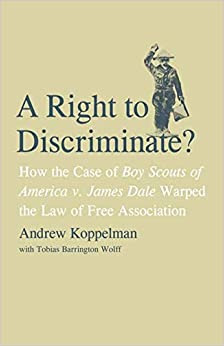
Andrew Koppelman and Tobias Barrington Wolff, A Right to Discriminate?: How the Case of Boy Scouts of America v. James Dale Warped the Law of Free Association (Yale University Press 2009)

Jack M. Balkin and Reva B. Siegel, The Constitution in 2020 (Oxford University Press 2009)
Heather K. Gerken, The Democracy Index: Why Our Election System Is Failing and How to Fix It (Princeton University Press 2009)

Mary Dudziak, Exporting American Dreams: Thurgood Marshall's African Journey (Oxford University Press 2008)

David Luban, Legal Ethics and Human Dignity (Cambridge Univ. Press 2007)

Ian Ayres, Super Crunchers: Why Thinking-By-Numbers is the New Way to be Smart (Bantam 2007)

Jack M. Balkin, James Grimmelmann, Eddan Katz, Nimrod Kozlovski, Shlomit Wagman and Tal Zarsky, eds., Cybercrime: Digital Cops in a Networked Environment (N.Y.U. Press 2007)

Jack M. Balkin and Beth Simone Noveck, The State of Play: Law, Games, and Virtual Worlds (N.Y.U. Press 2006)

Andrew Koppelman, Same Sex, Different States: When Same-Sex Marriages Cross State Lines (Yale University Press 2006)
Brian Tamanaha, Law as a Means to an End (Cambridge University Press 2006)
Sanford Levinson, Our Undemocratic Constitution (Oxford University Press 2006)
Mark Graber, Dred Scott and the Problem of Constitutional Evil (Cambridge University Press 2006)
Jack M. Balkin, ed., What Roe v. Wade Should Have Said (N.Y.U. Press 2005)
Sanford Levinson, ed., Torture: A Collection (Oxford University Press 2004)
Balkin.com homepage
Bibliography
Conlaw.net
Cultural Software
Writings
Opeds
The Information Society Project
BrownvBoard.com
Useful Links
Syllabi and Exams